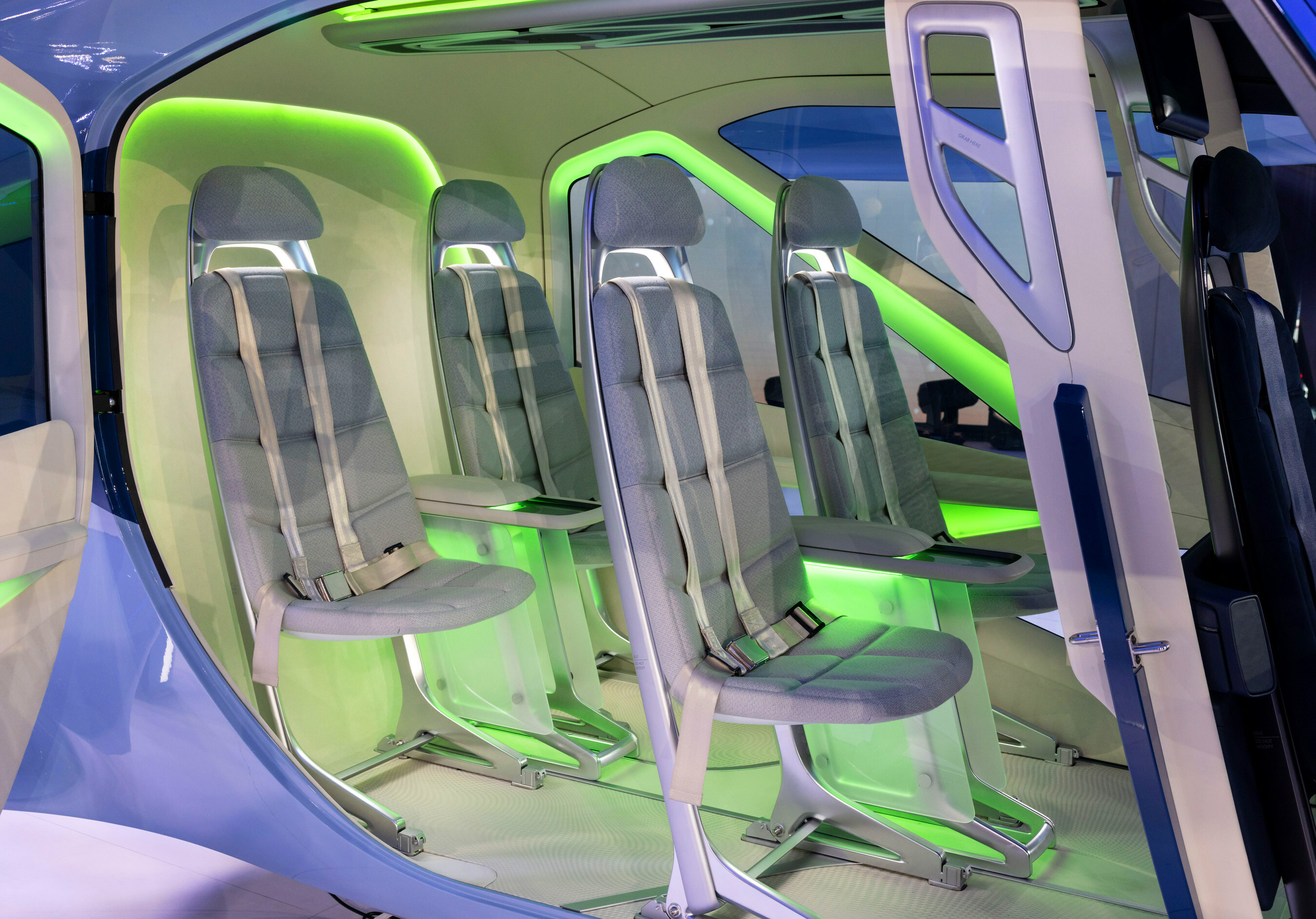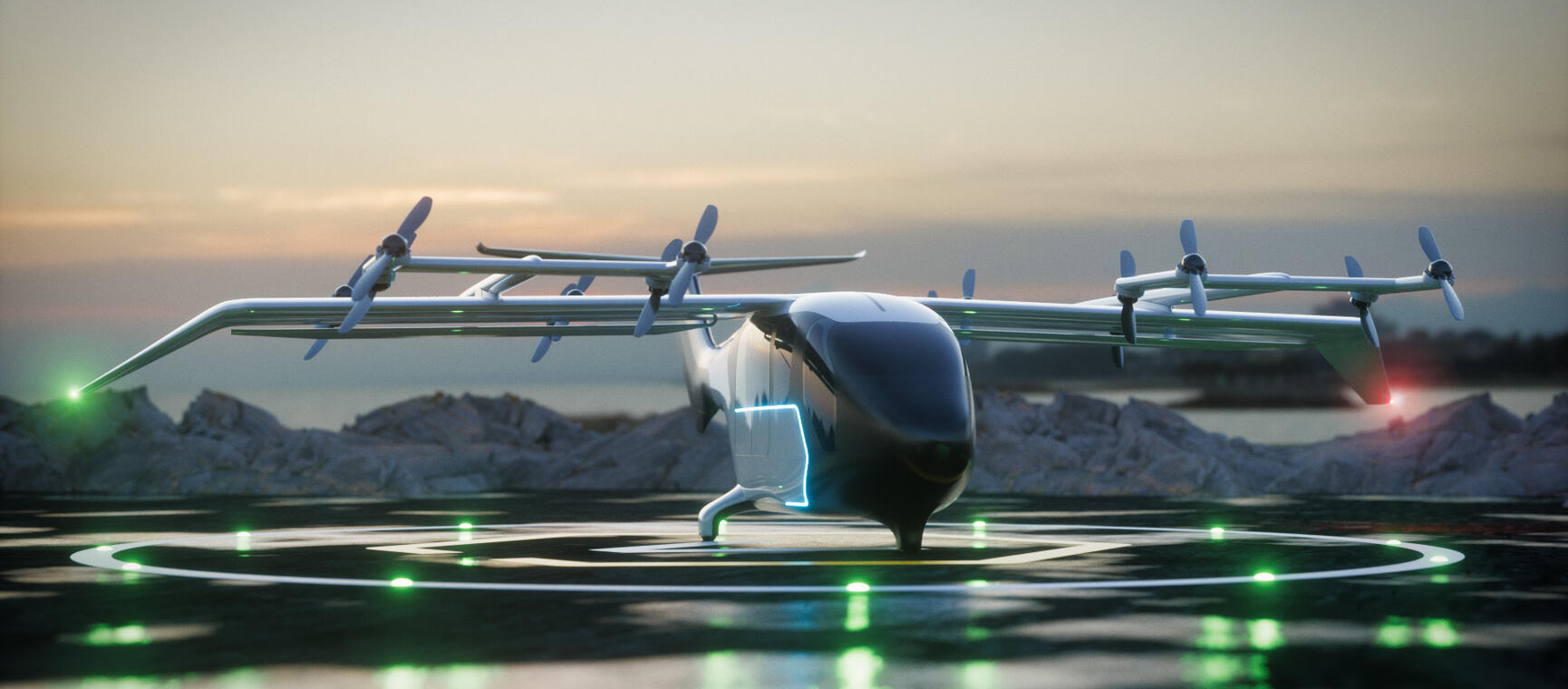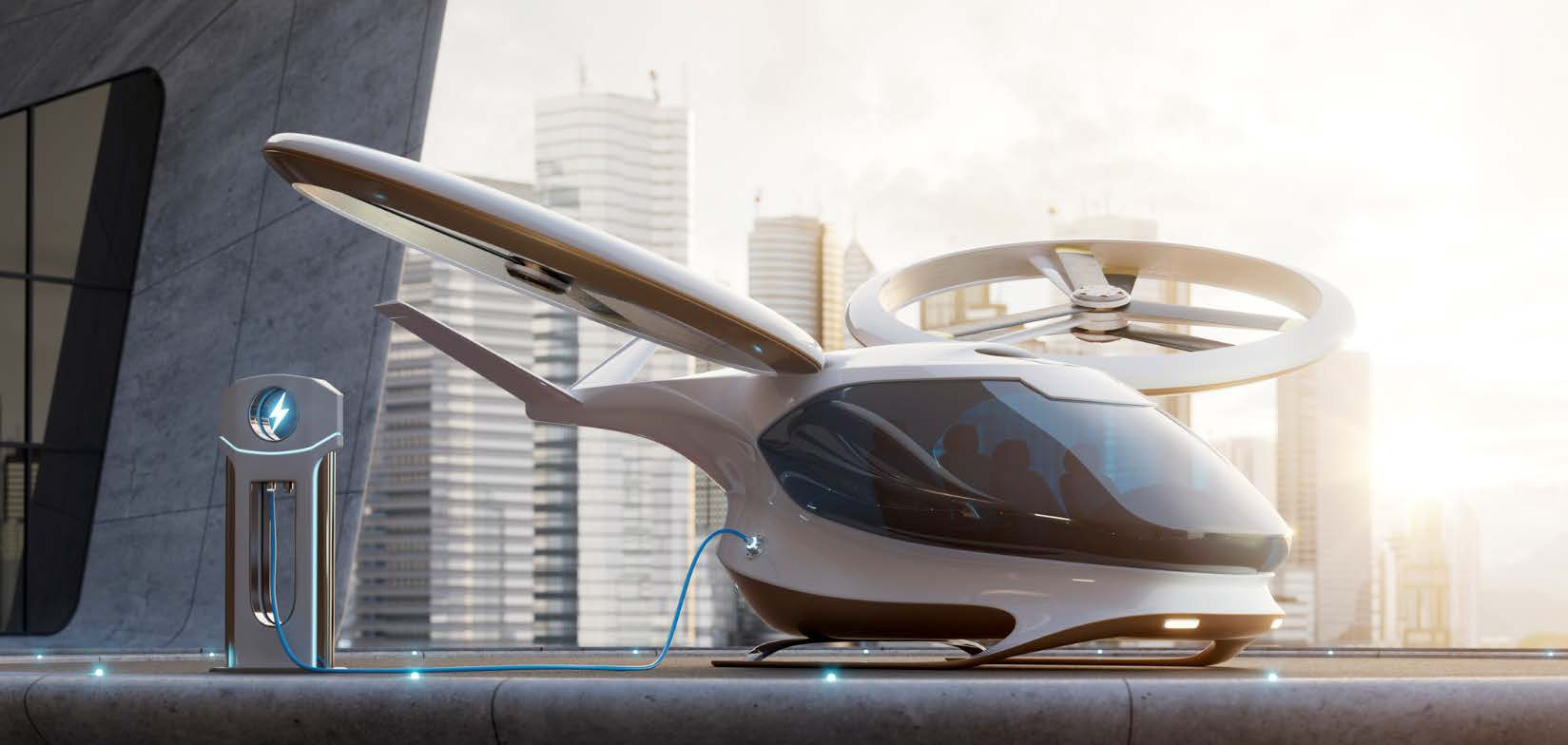Showcased at the Consumer Electronics Show (CES) 2024 in Las Vegas, Supernal, a Hyundai Motor Group subsidiary, introduced its latest innovation in urban air mobility: the S-A2 electric vertical take-off and landing (eVTOL) air taxi. This eVTOL makes significant strides in the advanced air mobility sector, showcasing a futuristic design that promises to transform short-distance urban travel.
The S-A2, evolved from its predecessor, the S-A1 concept introduced in 2020, is a testament to the rapid advancements in eVTOL technology. Unlike its forerunner, the S-A2 is not just a vision but a near-market-ready product slated for launch in 2028. This transition from a concept to a tangible product indicates a maturity in the eVTOL market, signifying the readiness of these aircraft for integration into urban travel landscapes.
In terms of design, Supernal has partnered with Hyundai Motor Group's automotive designers to create a harmonious blend of aesthetics and functionality. This collaboration has resulted in a human-centric design, maximizing passenger experience and safety. Central to the S-A2's design is its focus on safety, sustainability, and passenger comfort, which is crucial for its acceptance to operate in densely populated urban environments. The aircraft features a robust airframe structure, including redundant components in critical systems like the powertrain, flight controls, and avionics, ensuring maximum safety for passengers.
 Hyundai Supernal S-A2’s interior
Hyundai Supernal S-A2’s interior
A collaboration between Supernal's aerospace engineers and Hyundai Motor Group's automotive designers has resulted in a vehicle that epitomizes the fusion of 'auto meets aero.' The focus on a human-centric design is evident, from the energy-absorbing materials in the seat frames, enhancing safety in the event of a hard landing, to the new lighting features that enlarge the cabin feel and offer intuitive visual cues for passengers.
Interior modularity and battery upgradability, including the capability to replace the battery module as technology advances. This aspect of the design highlights Supernal's commitment to staying at the forefront of electric powertrain advancements that will define the next generation of aviation.
 Hyundai Supernal S-A2’s cockpit
Hyundai Supernal S-A2’s cockpit
The S-A2 departs from traditional eVTOL designs with its all-tilting rotor configuration. This innovative approach involves eight rotors mounted on booms attached to the wings, four in the front tilting upward and four in the rear tilting downward. This configuration is unique as it powers the vehicle efficiently through vertical lift and horizontal cruise phases of flight.
The S-A2 is designed for short urban hops, ideally for 25 to 40 miles. It cruises at an altitude of 1,500 feet, with a speed of 120 mph, and boasts a maximum range of approximately 60 miles on a single charge. The S-A2's electric propulsion system makes it significantly quieter than traditional helicopters or airplanes, contributing to a less intrusive urban soundscape.
While the initial models will be piloted, Supernal is ambitiously paving the way for autonomous flight technology. This development aligns with the broader industry trend towards remotely piloted operations, enhancing the scalability and efficiency of urban air mobility solutions.
When the S-A2 enters service in 2028 it will face several competitive aircraft in the electric vertical take-off and landing (eVTOL) space. These eVTOLs are designed to address various aspects of urban air mobility, each with unique features and technological innovations. Some notable competitors to Supernal's S-A2 include:
- Joby Aviation: Known for pioneering work in the eVTOL sector, Joby Aviation's aircraft is designed for air taxi services, emphasizing quiet operation and efficient performance. It features a unique tilt-rotor design and aims for a significant range and speed.
- Lilium Jet: The Lilium Jet is a distinctive eVTOL with a fixed-wing design and 36 electric jet engines. It stands out for its sleek design and promises a blend of higher speeds and more extended range, targeting regional travel and urban commutes.
- Volocopter's VoloCity and VoloConnect: Volocopter offers multiple models, including the VoloCity for urban air taxi services and the VoloConnect for longer urban to suburban routes. These aircraft emphasize safety and noise reduction and are designed for ease of use and comfort.
- EHang 216: A two-passenger autonomous aerial vehicle (AAV) developed by EHang, this eVTOL is designed for short-distance urban air mobility and is notable for its fully autonomous flight capabilities.
- Archer Aviation's Maker: Archer's Maker is an eVTOL designed for urban air mobility, focusing on sustainability, quiet operation, and safety. It is intended for use in dense urban environments for short commutes.
- Bell Nexus: Developed by Bell, the Nexus is an air taxi concept that stands out for its hybrid-electric propulsion system. It is designed to offer a unique blend of performance, range, and payload capacity.
- Airbus' CityAirbus and Vahana: Airbus has been working on multiple eVTOL concepts, including the CityAirbus, designed for urban air taxi services, and the Vahana, an autonomous eVTOL prototype focusing on single-passenger transport.
Each competitor brings different strengths and focuses to the eVTOL market, from autonomous capabilities to specific range and payload capacities. This competition is driving rapid advancements in technology and design, making it a dynamic and evolving industry.
|
Feature / Aircraft |
Supernal S-A2 |
Lilium Jet |
Volocopter VoloConnect |
EHang 216 |
Archer Aviation's Maker |
Bell Nexus |
Airbus CityAirbus |
|---|---|---|---|---|---|---|---|
|
Design Type |
eVTOL Air Taxi |
Fixed-wing eVTOL |
Multirotor eVTOL |
AAV eVTOL |
eVTOL |
Hybrid-electric eVTOL |
Multirotor eVTOL |
|
Passenger Capacity |
Pilot + 4 |
Up to 5 |
4 |
2 |
4 |
4 |
4 |
|
Propulsion |
Electric |
Electric |
Electric |
Electric |
Electric |
Hybrid-electric |
Electric |
|
Flight Type |
Piloted/Autonomous |
Piloted |
Piloted |
Autonomous |
Piloted |
Piloted |
Piloted/Autonomous |
|
Range |
Approx. 60 miles |
500 kilometers (310 miles) |
100 kilometers (about 62 miles) |
35 km (22 miles) |
60 miles (97 kilometers) |
150 miles (approximately 241 kilometers) |
80 kilometers (about 50 miles) |
|
Noise Level |
<65 dBA (hover), <45 dBA (cruise) |
Low noise |
Low noise |
Low noise |
Low noise |
Low noise |
Low noise |
|
Speed |
120 mph |
300KM per hour or 186 mph |
250 kilometers per hour (about 155 miles per hour) |
130 km/h (81 mph) |
150 miles per hour (241 kilometers per hour) |
200 mph (about 322 km/h) |
120 kilometers per hour (about 75 mph) |
|
Special Features |
All-tilting rotors, safety-focused design |
Sleek design, 36 electric engines |
Safety, noise reduction, ease of use |
Fully autonomous |
Sustainability, safety |
Unique propulsion system |
Multiple concepts, focus on urban transport |
|
Target Use |
Urban air Taxi |
Regional and urban air taxi |
Urban air taxi and regional routes |
Urban air taxi |
Urban air taxi |
Urban air taxi |
Urban air taxi, single-passenger transport |
As the S-A2 prepares to enter the highly competitive urban air mobility market, its performance relative to formidable rivals – including the swift Lilium Jet, the diverse models of Volocopter, the autonomous EHang 216, Archer Aviation's eco-conscious Maker, the hybrid-powered Bell Nexus, will be watched closely.
The S-A2 distinguishes itself with its unique blend of safety, efficiency, and passenger-centric design as it prepares for its launch in 2028 with a commitment to reshaping our urban travel experience.
The S-A2. Performance and Specs.
- Avg trip distance – 25-40 SM
- Avg cruise speed – > 120 MPH
- Number of pax – 4 pax + 1 pilot
- Noise at hover – < 65 dBA
- Noise at cruise – < 45 dBA
- Cruise altitude – 1,500 ft















